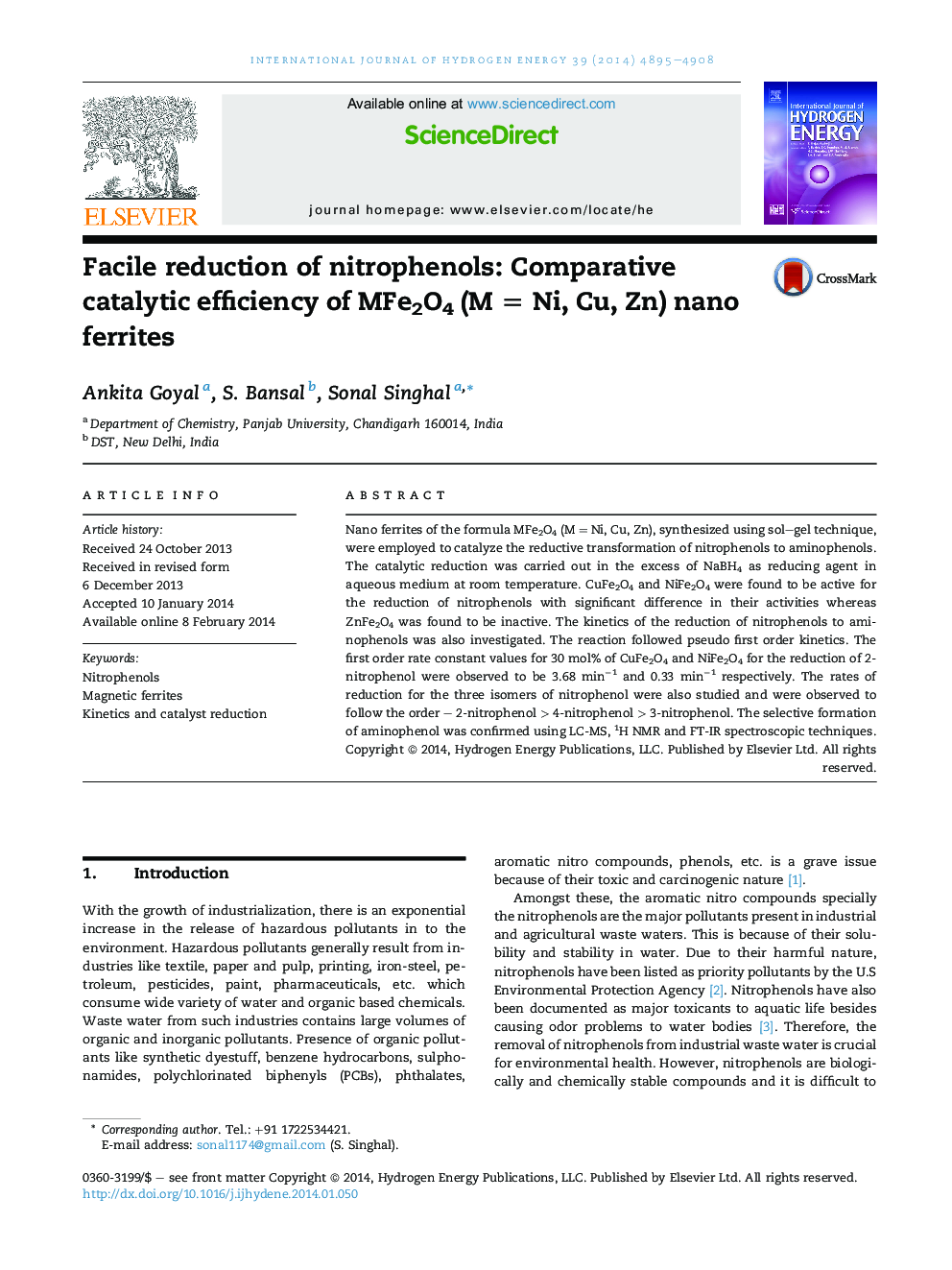| Article ID | Journal | Published Year | Pages | File Type |
|---|---|---|---|---|
| 1281256 | International Journal of Hydrogen Energy | 2014 | 14 Pages |
•Catalytic reduction of nitrophenols to aminophenols with NaBH4 was demonstrated.•Reduction was found to follow pseudo first order kinetics.•CuFe2O4 and NiFe2O4 were catalytically active for reduction.•2-NP > 4-NP > 3-NP was the observed reactivity order for nitrophenols.
Nano ferrites of the formula MFe2O4 (M = Ni, Cu, Zn), synthesized using sol–gel technique, were employed to catalyze the reductive transformation of nitrophenols to aminophenols. The catalytic reduction was carried out in the excess of NaBH4 as reducing agent in aqueous medium at room temperature. CuFe2O4 and NiFe2O4 were found to be active for the reduction of nitrophenols with significant difference in their activities whereas ZnFe2O4 was found to be inactive. The kinetics of the reduction of nitrophenols to aminophenols was also investigated. The reaction followed pseudo first order kinetics. The first order rate constant values for 30 mol% of CuFe2O4 and NiFe2O4 for the reduction of 2-nitrophenol were observed to be 3.68 min−1 and 0.33 min−1 respectively. The rates of reduction for the three isomers of nitrophenol were also studied and were observed to follow the order – 2-nitrophenol > 4-nitrophenol > 3-nitrophenol. The selective formation of aminophenol was confirmed using LC-MS, 1H NMR and FT-IR spectroscopic techniques.
Graphical abstractMFe2O4 (M = Ni, Cu, Zn) magnetic nanoparticles were explored as catalysts for the reduction of nitrophenols to aminophenols. The ferrites in which the divalent ions seek to the octahedral sites of the ferrite sub-lattice were found to be catalytically active.Figure optionsDownload full-size imageDownload as PowerPoint slide
